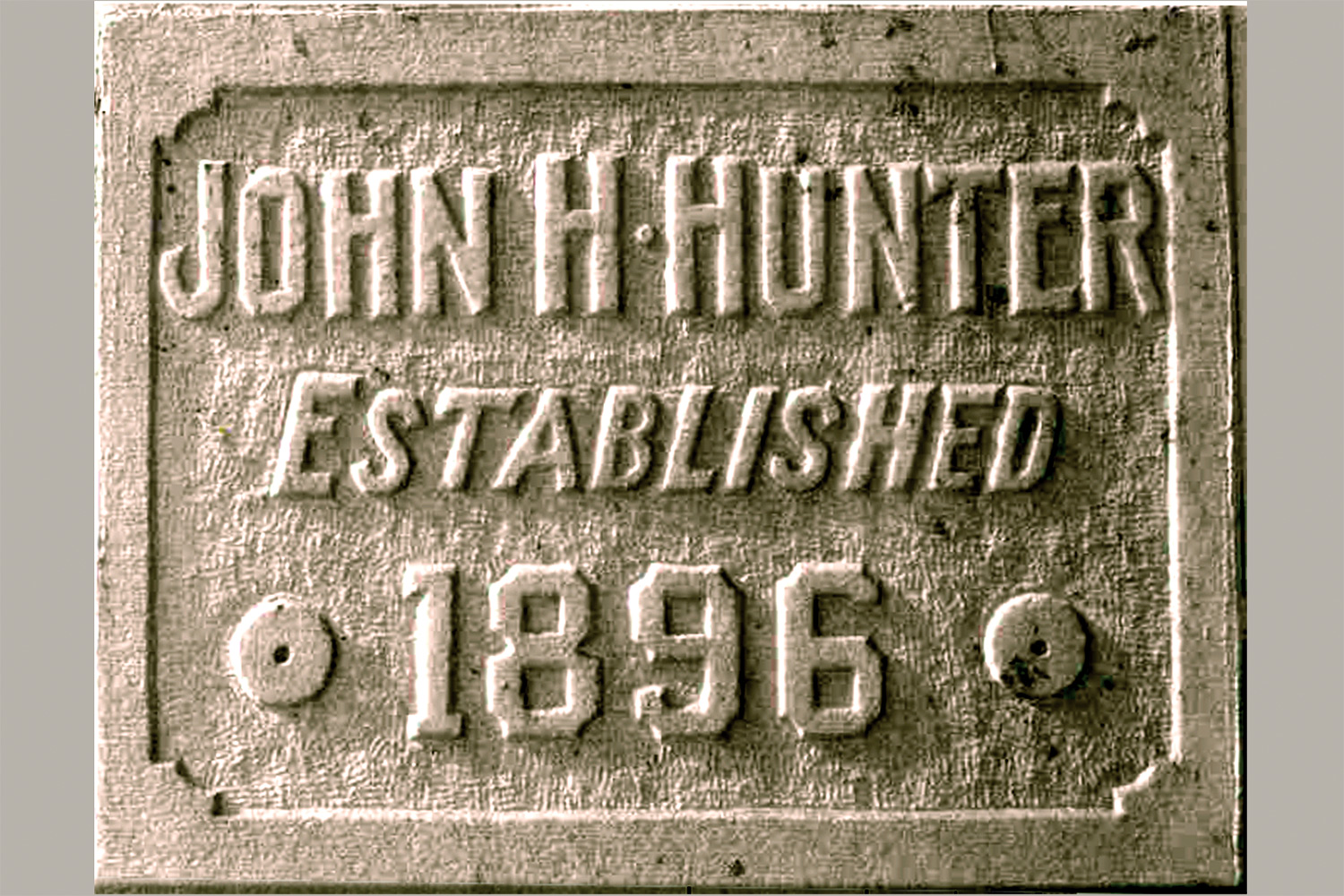Georgia at Silver Spring Avenue
Tools for the Trades
IN 1912 JOHN H. AND THOMAS HUNTER OPENED HUNTER BROS., a hardware and farm implements business, on what John described as “the most lonesome spot between Glenmont and the city of Washington.” Housed in a two-story wood frame structure, the hardware business had earlier been owned and operated by James H. Cissel, a co‑founder in 1910 of the Silver Spring National Bank.
Located on the Washington and Brookeville Turnpike (Georgia Avenue), Hunter Bros. was positioned to serve Montgomery County farmers transporting their bounty to Washington, D.C. markets. Farmers would place orders with the Hunters on their way to D.C. and pick them up on the return to their farms.
In 1920, John bought out his brother’s share of the business, and in 1925 replaced the wood structure with the current brick building at 8126 Georgia Avenue. The structure’s cornerstone, dated 1896, attests to the year that John established himself in the hardware business as a sixteen-year-old working for Orndorff & Truxton Co., located at 203 7th Street, NW, in Washington, D.C. Hunter likely had this cornerstone fabricated to reflect the number of years that he had been in the hardware business.
Beloved by his employees, Hunter fired but one employee during the thirty-three years that he operated his hardware store. “It hurt me more than it did him,” he was quoted as saying in a March 4, 1946 Washington Post article covering a testimonial dinner held in honor of his retirement. John H. Hunter passed away in 1960 at the age of eighty.
Trading Hands
IN 1945, JOHN H. HUNTER SOLD HIS HARDWARE BUSINESS to Lawrence B. Maloney, Sr., a former International Harvester Co. branch manager from Richmond, Va. Maloney was assisted in his new position by sons Lawrence (Larry), Jr. and Leonard. Renamed Maloney’s, Inc., the business also became an authorized dealer for International Harvester, Inc.’s trucks, tractors, and appliances.
Business expanded in 1946 with construction of a steel Quonset-style hut from which Maloney’s truck parts and service department operated. Butler Manufacturing Co. of Kansas City, Mo. manufactured the structure. Maloney’s Building Co. Division served as Butler’s local representative. The remodeled hut behind the store is actively used today.
As part of Maloney’s partnership, International Harvester commissioned the nationally renowned industrial design firm Raymond Loewy Associates in 1949 to develop a uniform look for its stores and service centers. The remodeled and enlarged Maloney’s featured a prominent red vertical pylon highlighting the black and red International Harvester trademark, also designed by Loewy. Floor to ceiling glass windows were installed to display customer-enticing merchandise. A 1952 Hardware Age profile on Maloney’s said the inside and outside modernization was undertaken to “…heighten buy‑appeal through greater eye‑appeal.”
Maloney Sr. died in 1955 at age 52. His family sold the business in 1963 to Earl and Doris Robertson. Earl started working at Maloney’s in 1951 and, knowing the value of name recognition, changed the name back to Hunter Hardware. Assisted by son Greg, Hunter Hardware continued its personalized service until 1984 when forced to close due to increased rent.










